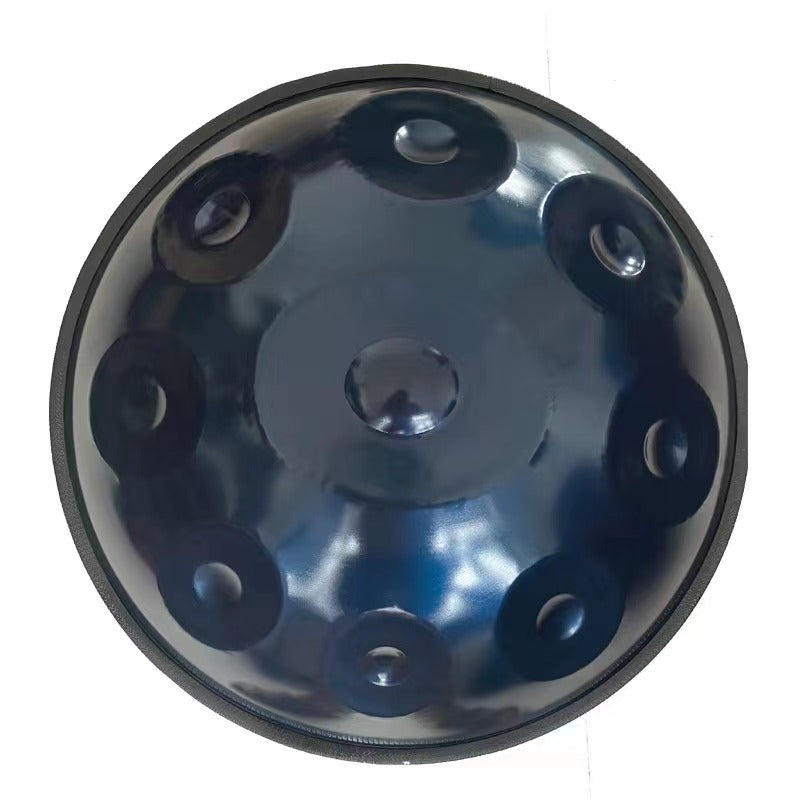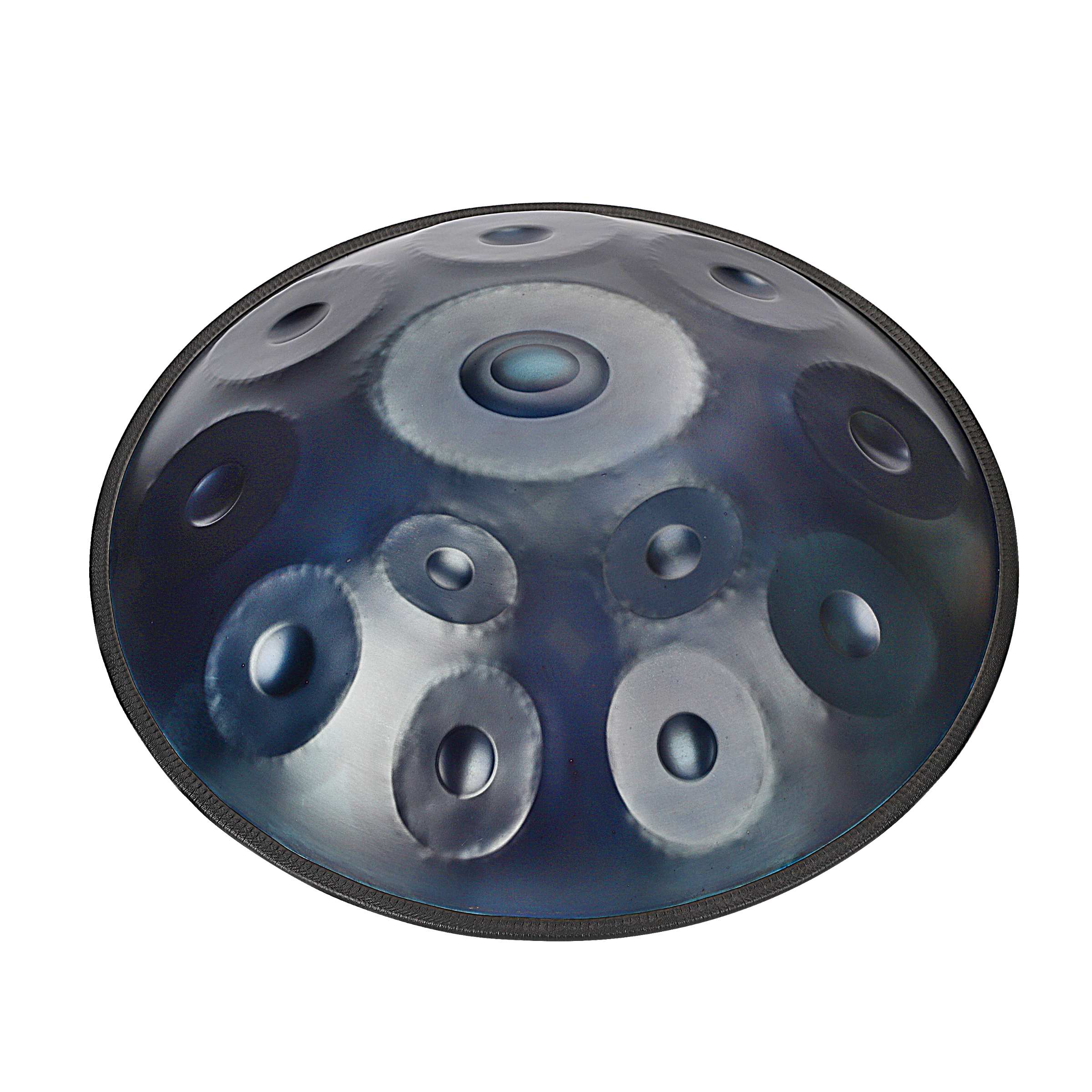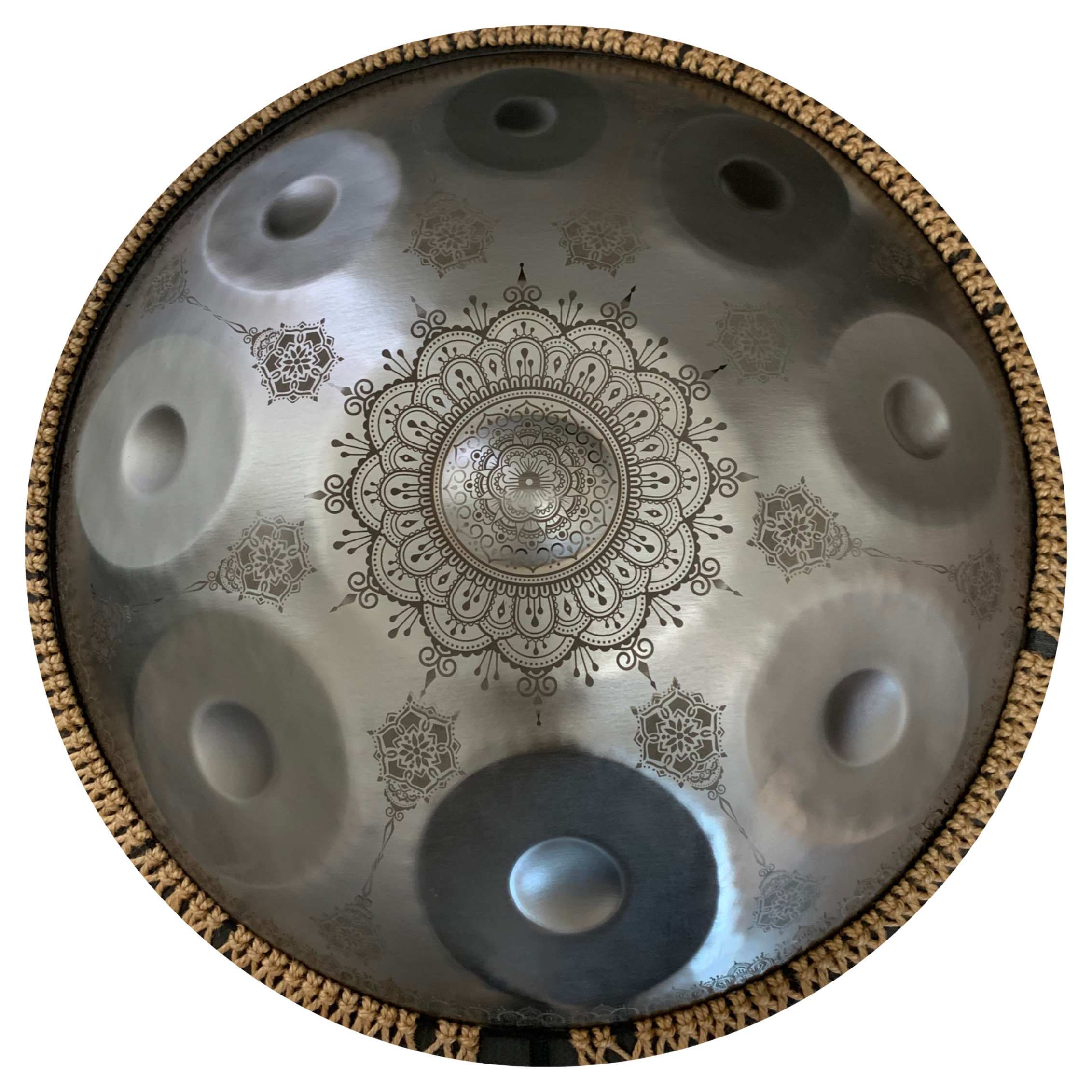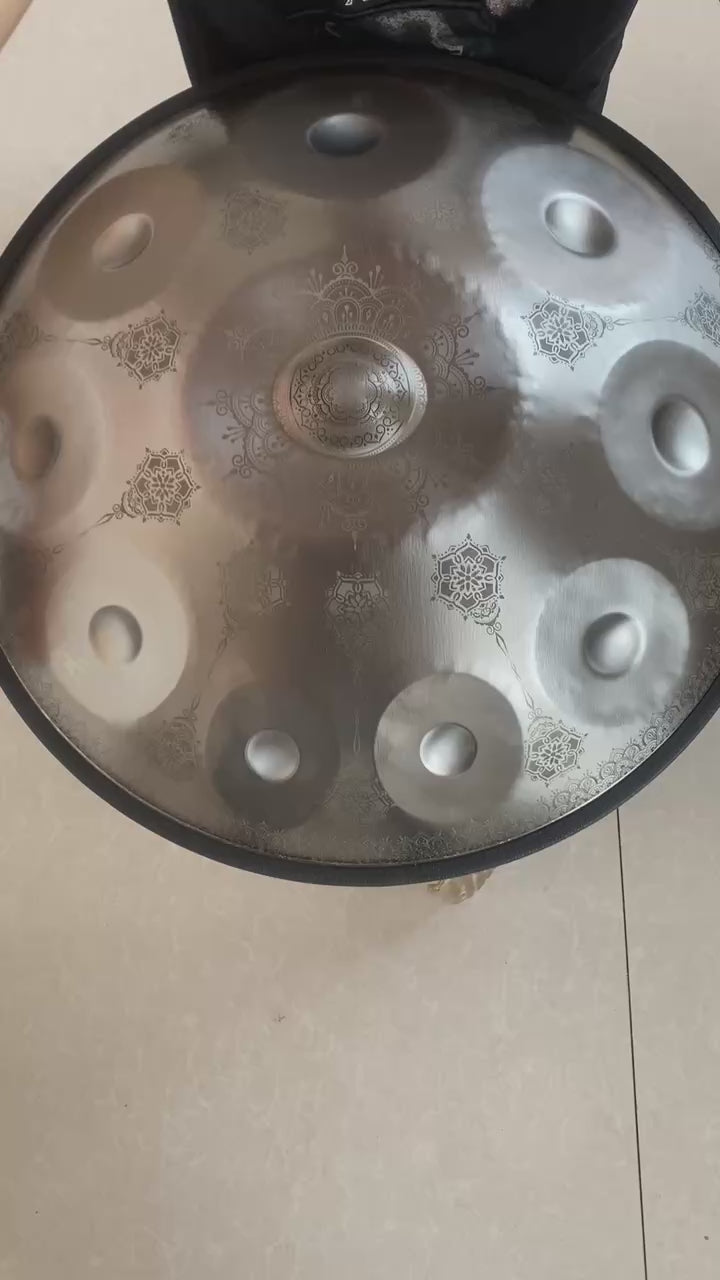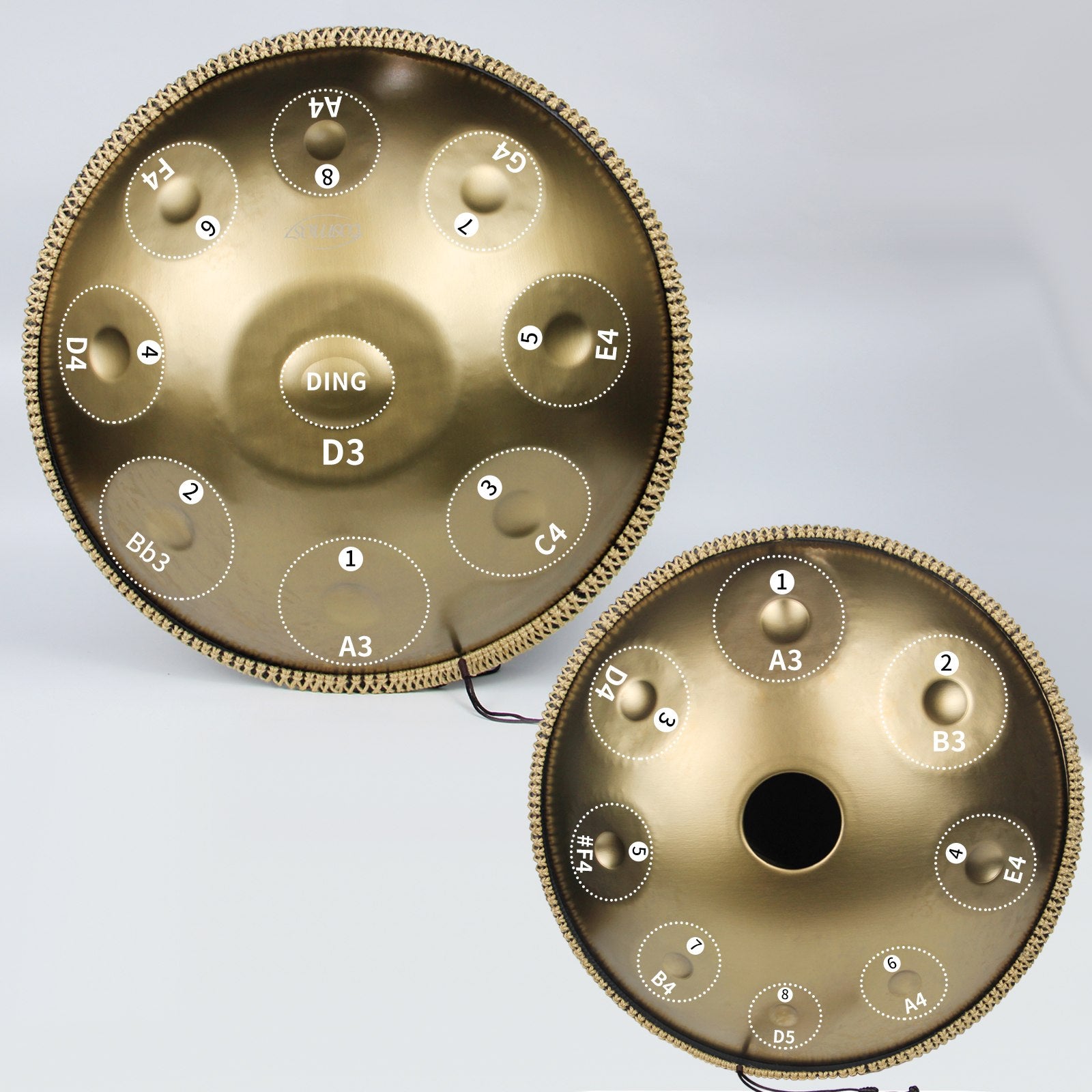The handpan is resonating its heavenly tunes and soothing harmonics to people, music-lovers like yourself. The Handpan D Minor scale is one such a highly appreciated handpan for the learners as well as for established musicians. This beginner-friendly guide provides you with a step-by-step of the Handpan D Minor; what it is, and how to get started playing.

Understanding the Handpan
A handpan is a percussive steel instrument that resounds melodic and harmonic tones when it's hit by the hands. It is made up of two hemispherical shells, the top shell has a central note (ding) with 8 tone fields around it. Every tone field was hammered and tuned to form a scale of tracks, producing an elaborate sonic texture.
Video Transcript: So What Is Special About the D Minor Scale?
The D Minor scale on a handpan is known for its deep, soulful sound that many people have come to love. The minor scale can sound quite dark and pensive, which is why it works well when composing music that you want to be hauntingly beautiful. In a Dm scale you would normally have the following tones :
- D (Ding)
- A
- Bb
- C
- D
- E
- F
- A
This combination of note creates a scale which can make variety area to be from melancholy-becoming-serene or serene..
Why Choose a D Minor Handpan?
- Emotional Depth
The emotional depth of the D Minor scale This makes it popular amongst composers and working musicians who want to create deeper music that hits you right in the feels.
- Versatility
Although the D Minor scale is sort of dismal, it does allow for Missy to spit in a variety of styles. It is a flexible sound suitable for many purposes across ambient, classical or any world genre. Thus, it is a good option for people who like to try out new offers from time to time.
- Accessibility for Beginners
The D Minor scale on the handpan is very user-friendly, which makes it easy for beginners. The notes are intuitively laid out so you only need a little bit of music knowledge to create beautiful and resonant melodies.
Handpan for Beginners in D Minor
- Choosing Your Handpan
Quality of Craftsmanship: This comes down to ensuring the handcraft made is top drawer when selecting a handpan. The key to any watch brand you are looking into is reliable makers who go above and beyond with their work. The sound and the durability of a handpan are also related to its material. Some are made of nitrided steel, others stainless steel- both used to produce *different* tonal qualities.
- Learning Basic Techniques
- Begin with normal techniques such as tapping, striking to get the feel of handpan playing. This version requires the white circle or notes to be struck in their centers using your fingertips and is meant to practice clear, booming tones. Practice different beating hands and sounds with free spinning handpan.
- Exploring the D Minor Scale
Practice the Handpan Scale in D Minor Playing simple melodies, shifting between note fields and the scales. Listen to Sound & See How Diff Notes Will Making Relationship with Each Other and Try Understanding of your Composition
- Listening and Learning
- Listen to recordings with the D Minor scale being played by handpan players. Listen to their methods and adnotation of melodies This can be therapeutic as well help you get an idea of what youre instrument is capable of.
How to Practice & Play Better
- Consistent Practice
Dedicate regular practice time in order to hone your skills Practice makes perfect and the more you practice playing your handpan, the better technique gets.
- Record and Reflect
- Set up a recording device and listen to it your practice sessions so you can hear what needs more work. PAUSE & REASSESS Your progress will provide valuable insight on how to adjust and refine your play.
- Play with Others
- Sign up for handpan communities where you can meet them on a retreat or in an event. For some, it might noticing how returning to play with others can them see their own gameplay in a new light and also allow for opportunities they never would have encountered on your solo journey.
- Experiment with Styles
Do not be afraid to step out and try different styles and genres. The D Minor scale can be used in many different ways so feel free to experiment with song and playing styles that you had not tried before if want to take your handpan play a little further.
Maintenance and Care
- Cleaning
Keep your handpan dry use a soft clean cloth to wipe the instrument over and then tap any dust or debris out of the tone-fields If it requires a deeper clean, soak in soapy water or use a mild soap solution; make sure the instrument dries out thoroughly.
- Storage
Keep your handpan in a dry and cool place, do not expose it to sunlight. Place it in a padded case to save from knocking around.
- Avoiding Rust
Keep your handpan moisturised by applying a very thin oily film (use Phoenix Oil or Frog Lube) to the head regularly. This rustproofs it and protects it from damp particularly which could contribute to repainting as well.
- Professional Maintenance
If the tuning goes off or it gets damaged, get in touch with a professional tuner for repair. But DIY alternator fixing might worsen the problem, so remember to avoid it.
Conclusion
In conclusion, the D Minor Handpan offers incredible versatility and potential for musical creation. Thanks to its rich, emotional tones sought-after by musicians and audiophiles alike - as well as simple operation that would not be out of place in the hands of a teenager just beginning their recording journey - it is perfect for beginners. Learning each of these notes and scale patterns (their nature and position, understanding their qualities across the neck), how to select a trained instrument along with putting in as much work that is needed - will allow you embarking on an excellent musical journey.
Most importantly, be sure to interact with the community and ask questions while taking your time on finding "the one" handpan. If played passionately with devotion, the Handpan D Minor will be your dearest friend in weaving music and spells that speak to love's new nature across star-gazers everywhere.


